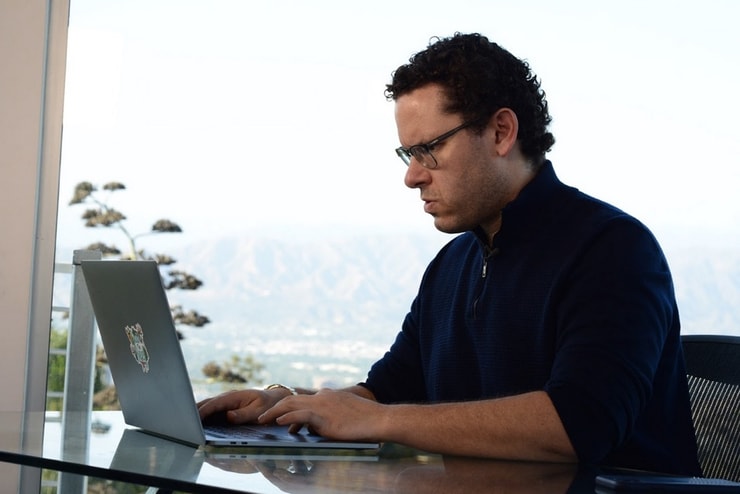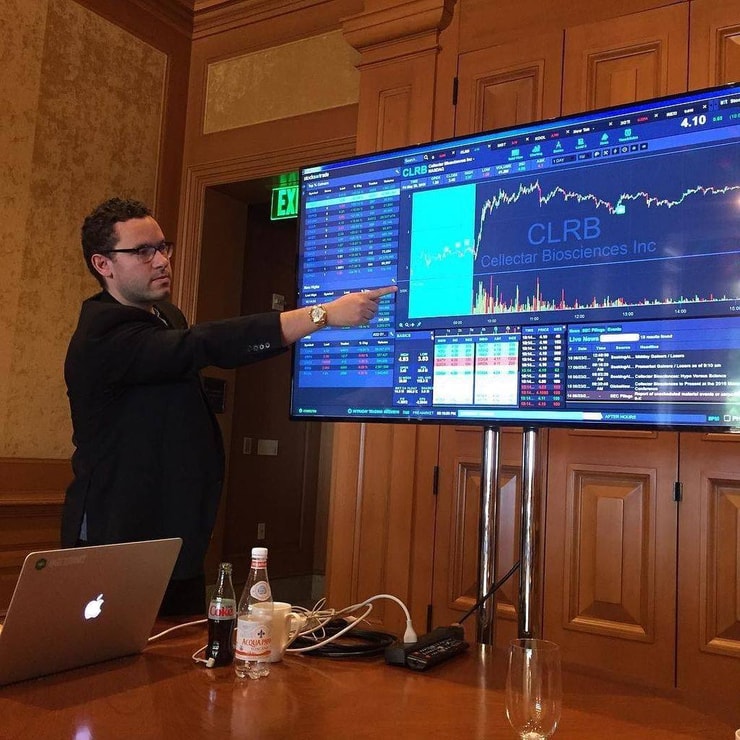I’ll level with you: I don’t like forex trading. But I’m just one trader. Some love it.
Forex stands for foreign exchange. It refers to trading foreign currencies. The forex market is extremely liquid — trillions of dollars (and other currencies) change hands every day. Traders try to take advantage of currency fluctuations to earn a profit.
Here’s what forex trading is, how it works, important terminology, and how to get started.
Table of Contents
- 1 What Is Forex Trading?
- 2 How Does Forex Trading Work?
- 3 How to Start Forex Trading
- 4 Forex Trading Strategies
- 5 Key Forex Terminology
- 6 Forex Trading Charts
- 7 Foreign Exchange Risk and Benefits
- 8 The Best Forex Trading Platforms
- 9 How to Become a Forex Trader Expert
- 10 What Is the Trading Challenge?
- 11 Conclusion
What Is Forex Trading?

2025 Millionaire Media, LLCSo what is forex trading all about?
If you’ve ever traveled abroad, you know a little about forex.
Say you went to Australia. At some point, you had to exchange your home currency for Australian dollars. When you did that, you probably noticed the current rate of exchange.
But that rate can fluctuate.
Forex trading (FX) is a global marketplace where all the world’s currencies can be traded based on buying and selling prices.
The spread — the difference between a currency’s buying and selling price — always changes due to currency price fluctuations. Forex traders strive to take advantage of these fluctuations.
Since forex trading is a highly liquid investment opportunity, some trades happen in fractions of a second. In other cases, buyers hang on to investments and wait for a positive swing based on their position.
What Is the Forex Market?
Let’s talk about what the forex market is … and what it isn’t. There’s a lot of confusion about forex trading versus stock trading, so let’s discuss the differences.
Forex vs. Stock Trading
In forex trading, you don’t buy and sell on the stock market … you’re on the foreign exchange market. The forex market is decentralized, like the OTC and penny stocks.
It’s a different exchange with different rules. Most notably, the forex market is open 24 hours a day, five days a week.
That makes sense — at any given point in the day, it’s trading hours somewhere in the world. This can be a benefit for traders with a day job or who feel restricted by regular stock market hours.
Second, the forex market moves at a different pace. Price quotes can change at any given time, up or down. You gotta be on your toes, ready to execute trades quickly to take advantage of these super quick price shifts.
Another difference? With stocks, you buy and sell a single security. On the forex market, you trade currencies in pairs.
What Is a Forex Broker?
A forex broker is like a stockbroker, but for foreign exchange transactions.
It’s your intermediary with the interbank system or networks of banks. You have to execute buy or sell orders through a broker.
Typically, the broker offers you a price from banks where they hold lines of credit and access to the forex market. Brokers typically work with multiple banks and search for the best price available.
How Does Forex Trading Work?
Just like the stock market, supply and demand drive price quotes in the forex market.
As one currency becomes devalued next to another, you have an opportunity to capitalize on the discrepancy.
An executed trade is called a settlement and carried out in cash. If you sell a currency to someone else, you get the agreed-upon value of the currency’s value based on how much of it you agreed to buy.
How to Start Forex Trading
I don’t trade forex. it relies heavily on leverage. I don’t like leverage.
There’s a lot of liquidity with forex trading, so brokers give investors huge leeway when it comes to executing trades…
Some brokers set up a 200:1 trading leverage ratio. That means putting up $5 of trading account money for a $4,000 trade.
You might think, “Cool! I can grow my account really fast like that!”
Technically true … but so is the opposite.
You can blow up your account super fast and get yourself really deep in the hole. That’s especially true if you use more leverage than you have in your trading account.
So if you want to become a forex trader, this is the most important step to take…
More Breaking News
- RXRX’s Unexpected Surge: Analyzing the Latest Performance
- Will FUTU’s Current Surge Sustain?
- Ford Extends Discounts to Boost Model Sales
Learn Forex Trading
The first step to forex trading shouldn’t be loading up your account and diving into trades. It’s learning how forex trading works.
Take time to study books, tutorials, and resources for forex trading for beginners.
I created my Trading Challenge to educate traders –– I see the value in educating yourself before risking hard-earned capital.
Personally, I trade penny stocks because there’s less competition. But with forex, there’s a ton of competition. You’re up against some of the most skilled traders out there. You gotta be on your game. That means education is critical.
I urge new students to learn before they start trading penny stocks, and I urge you to learn before starting with forex trading … or any type of trading. Sit back and learn the ropes before jumping in.
You need a ton of research for consistency in any trading. It can help you avoid dumb decisions.
You also need vigilance in forex trading. Things happen fast — you need to act quickly at times. It’s OK to watch expert forex traders to get a sense of things. But NEVER follow anyone else’s trades.
A mentor can be invaluable. I mentor my students, but I can’t be your forex mentor. Look for someone with solid experience and a transparent record.
Getting Started
To start executing orders, you first need an account. Not all brokers offer forex trading, so do your research.
Your forex broker is a key piece of your trading experience. Don’t just go with the first forex trading app you find … or the cheapest. Once you have your account, you can start executing trades. A little advice? Start small. Especially while you’re learning, and definitely if you use leverage. One benchmark is to only use 1% of your account at a time.
Forex Trading Strategies
You need to approach forex trading differently than stock market trading.
For one, the market is so liquid and has so much volume … there’s seriously never a dull moment.
Forex is also an international marketplace. You gotta wrap your mind around that. There are global economic factors at work, as well as the relationship between the two currencies you choose to trade. Here’s what you always need to keep in mind:
- Global economic events can affect currencies.
- Any factors that can affect the currency you’re buying or selling.
- The relationship between the countries behind the currencies you’re pairing.
You also gotta know fundamental analysis and technical indicators. They’re equally important in forex trading.
Let’s look at some key factors for forex trading and strategies, and what you should avoid.
Forex Trading Scams
Think trading forex is ‘safer’ than stocks? Think again. Like penny stocks, forex is fraught with scams.
That’s why education is critical. Here’s what to watch for…
Robot Scams: Forex robots can promise incredible returns through algorithms.
But if it sounds too good to be true, it probably is. Steer clear of ridiculous promises and unregulated brokers. Protect yourself.
Alert Scams: Signal sellers are the stock promoters of this world –– they send out alerts and signals that are often self-serving. Be very wary of huge subscription fees … or alerts for specific brokers.
Don’t blindly trust forex trading boards either. Check for verified trades. I don’t trade forex, but I do show every trade.
Investment Scams: Say someone has an incredible offer you can’t miss … But you gotta act now! Just hand over your bank account number, right?
No! There are all kinds of scams out there. Some people even pose as me trying to get money from newbie traders. I’ll never ask you for money directly, nor will anyone in my team. If you run into this in trading, stocks, or forex, beware!
Best Time to Trade Forex
Remember, with forex, different marketplaces work together, so you can trade 24 hours a day. But there can better times to trade.
Many forex traders find trading sweet spots during the overlaps in opening hours between different markets. Typically, these are the times of higher price ranges … and bigger opportunities. Here are some of those overlaps in the forex market (all times in EST)…
U.S./London: From 8 a.m. to 12 p.m, there’s a ton of forex trading activity. The dollar and the euro are the most popular trading currencies. This is considered prime time for trading with peak volatility levels.
Sydney/Tokyo: From 2 a.m. to 4 a.m., there’s a particularly high period of point in percentage (pip) fluctuation.
London/Tokyo: From 3 a.m. until 4 a.m you might see some nice pip changes.
Fundamental Analysis and Fundamental Trading Strategies
Fundamental analysis is important in stock trading. You check out the company — earnings, profits, news, etc.
Forex fundamentals are similar. The research basics are the same. But instead of evaluating a company’s financial health, you evaluate the financial health of entire nations.
But don’t just focus on the currency you’re buying or selling. You have to evaluate both –– and their relationship to one another within the global marketplace.
So, big global events can affect foreign exchange rates and forex trading, like a war or trade war.
Also consider other economic indicators, like the unemployment rate.
Technical Analysis and Technical Indicators
I consider myself a glorified history teacher. My big secret to finding stocks to trade? I study the past to find patterns that repeat. That’s where I see opportunities. And when they come, I’m ready to pounce.
History can repeat itself. Not always to the letter, not always exactly the same. But enough that it bears scrutiny.
That’s the foundation of technical analysis. Historical data can inform a security’s future performance.
You can never predict things. But you can make educated decisions and build a solid trading thesis. And technical traders don’t ignore fundamentals. They simply do more thorough research to examine a potential investment from every angle.
So how does this apply to forex trading?
Say the U.S. dollar increases in value every time the unemployment rate dips below a certain percentage over the last 10 years. Technical traders might use that indicator to buy U.S. currency to take advantage of the bounce.
By looking at and comparing charts, they can find patterns on which to base future forex trades.
Currency Pairs
When you trade currency shares, you gotta think in pairs. In a currency pair, the base currency goes first, and the quote currency second.
Let’s look at the most popular currency pair in the world: the euro and the U.S. dollar. In this example, the currency pair looks like one of these:
- EURUSD
- EUR/USD
Either way, the euro is the base currency and the U.S. dollar is the quote currency.
Best Forex Pairs to Trade
What are the best forex pairs to trade? Just like stocks, there’s no one answer. But here are a few things to consider:
Major Pairs
Major pairs are the most commonly traded pairs on the forex market exchange. They consist of the following:
- EUR/USD
- USD/JPY
- GBP/USD
- AUD/USD
- USD/CHF
- NZD/USD
- USD/CAD
These pairs make up the majority of forex trading. They’re also the most liquid due to high volume.
Cross-Currency Pairs
A cross-country pair is a currency pair that doesn’t involve the U.S. dollar. In other words, there’s no need to exchange the currency into U.S. dollars to complete the transaction.
Exotic Currency Pairs
This refers to pairs that are rarely traded on the forex exchange. Exotics can change over time as pairs fall in and out of favor based on economic and other factors.
- For instance, EUR/TRY is considered an exotic. The euro is the base and the Turkish lira is the quote.
- Many exotics include the U.S. dollar, such as USD/DKK (the Danish krone as the quote currency) and USD/THB (with the Thailand baht as the quote).
Pay attention to macroeconomic factors for exotic currency pairs, like supply and demand. How are the countries in terms of international relations?
Political instability can give you a false understanding of where an exotic currency pair might go. Be careful with these kinds of trades, and if you start to lose, get out quickly.
Key Forex Terminology
If you want to trade forex, it’s smart to pick up key terms to help you navigate forex markets…
Long Position vs. Short Position
This is where currency pairs come into play. Let’s look at a EUR/USD trade.
When you take a long position on EUR/USD, you’re betting that the base currency (EUR) will go up in price compared to the USD. So you’re going long on EUR. It’s also called a buying position. You eventually want to sell your EUR for a profit because of the expected rise in value.
What if it’s the other way around? If you take a short position on EUR/USD, you’re betting that the euro will decrease in value compared to the U.S. dollar.
Forex trading is unique. You’re basically always going long because of those currency pairs.
Even though you take a short position in the last example, you actually go long on USD. It’s different from the stock market, which typically revolves around the shares rather than the money used to buy or sell them.
You don’t often hear a stock trader who’s going short say, “I’m going long on the USD.” But that’s the case because that trader used U.S. dollars to buy or sell shares.
Leverage
Leverage is a way to maximize buying power. You deposit a small amount in your account and trade a larger volume. It’s expressed as a ratio form. So 50:1 means your buying power is multiplied by 50.
It can mean bigger profits … and losses.
Margin
This is the portion of your account that’s required to maintain a position in a trade.
Pip
Percentage in price is a way to measure the change of a currency pair. It’s a standardized unit and recognized as the smallest unit of change for a currency quote.
Most currency pairs are measured up to five decimal places. For many pairs, the pip corresponds to the fourth decimal place, with some exceptions.
Spread
The price difference between the bid and ask prices of a given currency pair.
Lot
The standardized quantity that you’re trading. In forex, a single lot is 100,000 units.
Signals
Suggestions for entering a forex trade at a specified price and/or time that come from a person or forex robot. Kinda like a stock alert.
Forex Trading Charts

2025 Millionaire Media, LLCYou know me … I’m all about charts.
If you want to trade forex, you need a firm grasp on stock charts. Currencies can fluctuate so quickly, you need to know how to track trends.
Candlestick, bar, and line charts are the most common here. Each has pros and cons. I’m partial to candlestick charts — they make the most sense to me. Find what works for you. Let’s look at some basics.
Candlestick Chart
On a candlestick chart, you see bars that look like candlesticks, with a body and wicks. Candlesticks can show information about a currency’s movements: opening price, highest price, lowest price, and closing price.
The wide section of the chart indicates the span between opening and closing. A black body indicates that the closing price was lower than the opening price. A white body indicates the exact opposite.
The wicks (or shadows) show you highs and lows for a day’s trades. You can make inferences based on the difference between the opening and closing prices (the length of the wicks).
Bar Chart
A bar chart is similar to a candlestick chart but not as data-intensive.
The top of the bar indicates the high price, the bottom indicates the low price. In between, you have the opening and closing prices represented by connected horizontal lines to the left and right, respectively.
Line Chart
The line chart is the simplest but provides less insight. Many beginning forex traders start with line charts. They’re easy to read, which can aid in learning technical analysis.
But as you progress in forex trading, you can explore other kinds of charts. The more thorough you can be, the better.
Foreign Exchange Risk and Benefits
There’s no such thing as a risk-free investment.
I don’t like taking big risks, and neither should you. I encourage you to follow the same philosophy with forex trading.
High volume and liquidity can make forex trading lucrative — but that means more risk. The market can move so fast that you can lose thousands of dollars without even realizing it.
Leverage is VERY dangerous. It can blow up in your face, so be careful. Remember, you’re investing alongside big hedge funds and institutions that use high-tech software to make rapid-fire decisions.
Can Forex Trading Be Profitable
Is forex trading worth it?
Well…
Are you passionate about it and making intelligent trades?
If yes, forex trading could be a good fit. But remember: it’s a marathon, not a sprint. Start slow. Make small, short-term trades to start.
Don’t use large amounts of leverage … that’s how traders can blow up fast.
The Best Forex Trading Platforms
Sorry … there’s no one answer here. I’m not a forex trader, so I have no reference point. But I can say this…
You really need to do your research to make sure a platform suits your needs. Don’t just go with the first platform you find. Look at several. Read reviews and the fine print (account minimums, fees…)
How to Become a Forex Trader Expert
How do you become an expert at anything? No big reveal here. You’ve gotta study and practice a lot.
Devote time to your education. It takes a lot of time, routine, and repetition to get the hang of any trading.
What Is the Trading Challenge?
So I’m not a forex trader, but who am I? I’m a penny stock trader who started with a small account and made millions.
I didn’t have a mentor when I learned how to trade, and I made a lot of mistakes. Now I teach trading to be a mentor to my students … the kind of mentor I wish I’d had.
Want an education in the stock market and low-priced stocks? Join my Trading Challenge.
In the Challenge, I’ll help you learn the market basics … and how to become a self-sufficient trader. I have a massive and growing library of DVDs, webinars, and resources like watchlists and trade commentary.
I love helping traders find their stride in the stock market — on their own terms. But if you think you’ll get rich quick here, I can’t help.
Conclusion
Forex trading is popular. The market’s extremely liquid, and the 24-hour market makes it accessible to all sorts of traders all over the world.
Yeah, it has the potential to deliver profits. But like any other trading style, forex trading comes with plenty of risk.
Again, forex isn’t my thing. I don’t like leverage or competition. I prefer low-priced stocks.
But every trader’s different. If you think forex is for you, invest in your education first and practice before diving in.
Do you trade forex? What do you like about it? Leave a comment below … I love to hear from my readers!











Leave a reply